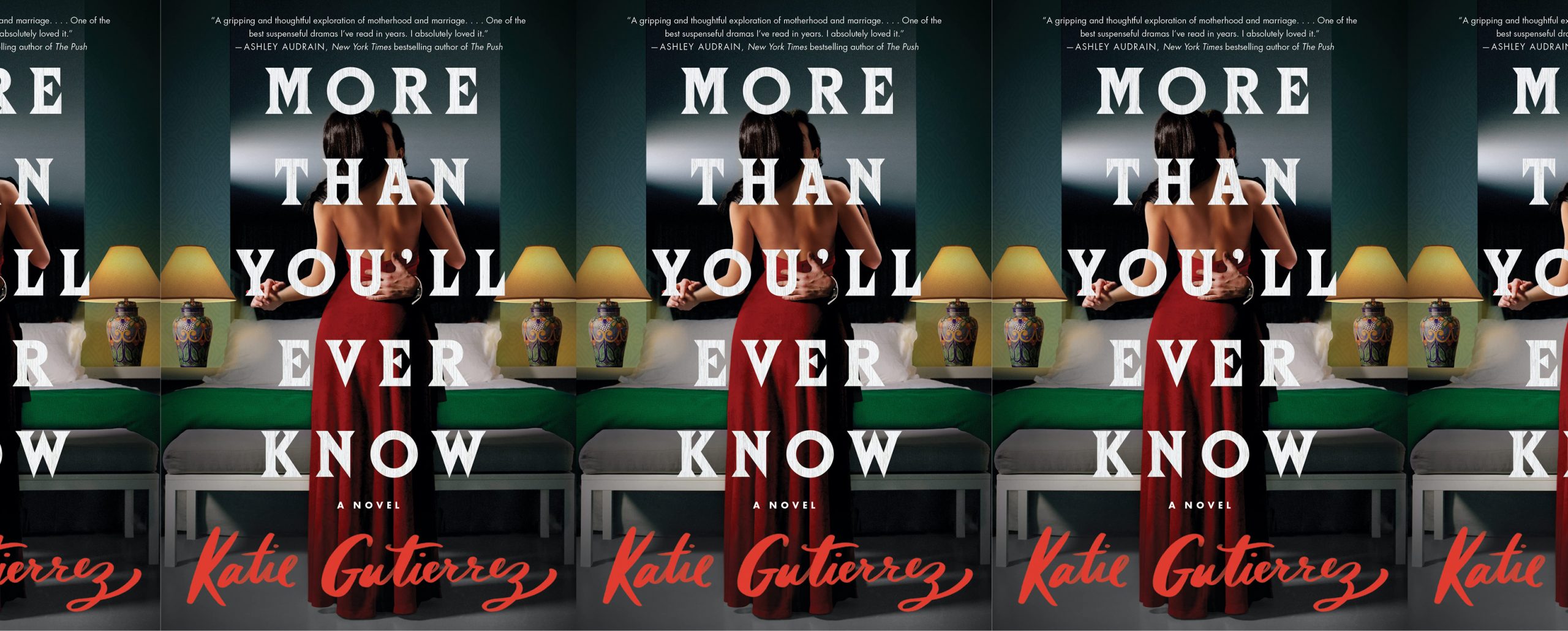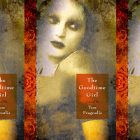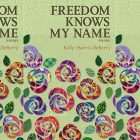“We all compartmentalize parts of ourselves to an extent”: An Interview with Katie Gutierrez

My son is lying on the floor as I type this, admonishing me not to knock over his dinosaur with the wheels of my chair. My daughter is napping. When I spoke with Katie Gutierrez about her debut novel, it was her son who was napping, her daughter away at preschool for the morning. This is familiar stolen time, the cracks in between childcare in which writers so often work.
More Than You’ll Ever Know is a novel about time, although that’s not what will compel readers to pick it up. The driving force of the novel is Lore, a woman who once led two lives. One life, her first, is that of wife and mother in Laredo, TX. The other life is across the border in Mexico City, Mexico, where she is also a wife, though to another man. When Lore’s secret is revealed, one husband is killed, and one husband is sent to jail. But there are more secrets that can’t be buried or locked away, and when Cassie, a true crime writer, becomes obsessed with the case twenty years later, Lore realizes she may not be able to control who knows the truth.
The novel is split between two time periods; Lore tells Cassie her story in 2017, and the action takes place in the early 1980s. This gives Gutierrez the ability to balance along a tightrope between two poles, playing with pairs that deepen the story. There are couples and twins, two countries, two cities, and two narrative voices (first person and third); each pair offers the reader a crack into the truth. Cassie is a stand in for every curious true crime aficionado, but she also allows More Than You’ll Ever Know to feel self-aware.
Time is the enemy of the secrets Lore is keeping, and time is the necessity writers build on. Gutierrez knows about time and taking chances. After losing her first salaried job in writing, she built a freelance career that continued through her time in the MFA program at Texas State. It was a career she felt proud of and one she could have continued with, but it came at a cost. When her father and brother asked why she wasn’t working on her creative writing, there was a choice to be made. Gutierrez chose to step away and write a novel.
Two years later she sent the novel out and quickly found her agent. The novel went out to editors and then, despite a few near deals, no one wanted to buy it.
A writing career, like all careers, is about timing and luck and outside forces as much as it is about writing. And meanwhile, life happens.
For Lore and Cassie, the life that happens around their respective careers is tied closely to the work they do. Lore is a banker whose job takes her back and forth between her two lives. Cassie is a writer who learns who she is by telling Lore’s story. For Gutierrez, her experience becoming a mother became deeply entwined with the road to publishing. When her first novel didn’t sell, Gutierrez began More Than You’ll Ever Know. As the due date for her second child approached, so did the deadline for going on submission. Less than a week after he was born the novel went out. It was a Friday. One hazy weekend as a new family of four passed. On Monday, Gutierrez’s agent called. Three editors wanted to set up phone calls. On Tuesday an editor from the UK got in touch after getting the book from a scout; they wanted to make a pre-emptive offer.
What would have happened if Gutierrez didn’t take the time off to write her first novel? What would have happened if the right editor hadn’t had a free weekend to race through her manuscript? What if these characters did not live through the 1980’s recession? What if each one had chosen to tell the truth earlier, or later, or never at all?
Margaret LaFleur: One of the aspects that I loved in your novel is the time period, focusing on the recession of the early 1980s. How much research went into the novel to build this setting? As a writer who is from the area of the world that you are writing about, how much did your background and your family stories inform your process?
Katie Gutierrez: My background and family stories deeply informed the process, from small moments of familiarity—like Sunday lunch at Lore’s parents’ house, which I modeled after our own Sunday lunches at my grandpa’s house—to the larger sense of place that I hope permeates the novel. I was a very young child in the 1980s, so a lot of the specific research around the peso devaluation came from stories from my parents. That includes stories I grew up hearing—when my dad, like Fabian, lived in Austin on and off for a year or two while he tried to build business for his electrical supply store. I did ask them a lot of questions as I was writing the book, to refresh those stories or make sure that the more academic research that I was doing matched up with their experiences. I did a lot of research with archived New York Times articles from back then that were available, which were really helpful to me to situate what was happening in south Texas in the broader context of what was happening in the US and what was happening in Mexico.
ML: As you were writing, did you know that place would be such a strong element? Your characters are all also very strong and well-drawn, and I’m curious about which came first for you. Did you know that you wanted to write these characters, or did you know you wanted to write this place, or maybe they’re linked?
KG: Lore’s character definitely came first. I actually had the spark for the idea around 2011, when I was in my MFA program and came across a story where a man had been married to a woman for thirty years, had three kids with her, and then twenty miles down the road he had a second family with another woman. Then the first wife died under sort of somewhat mysterious circumstances, and two weeks later he married the second woman. At that point everyone was like, “Well, who is she, where did she come from?” It turned out he had a fake name with her, had fathered her two children, put them through the same elite prep school as his children with his first wife, where the two women unknowingly served on the same school board. It was a legit compartmentalization.
I’ve always been fascinated by that kind of extreme compartmentalization and what it must take to keep those worlds separate. Because we all compartmentalize parts of ourselves to an extent—what we present to the public versus who we know ourselves to be in private, or who we are with our spouses or partners versus who we are with our parents, are different. We’re different people to different people. That’s always been really interesting to me, and the double life thing kind of pushes that to this ridiculous extreme. Just out of curiosity I looked around to see if any women had been known to do that, and I really couldn’t find any, except for the writer Anaïs Nin, who was married to two men at the same time for eleven years. Of course, it makes sense when you think about it, right? I think our society makes it a whole lot easier for men to do this. But I was really compelled by the idea of a woman and what her motivations would be. I also, at the time, already had the idea of like a frame story of a journalist who was interviewing this woman and how their two stories might collide. But at the time I was working on my thesis for my MFA program, which was a collection of short stories, and they were all set in south Texas, but they were very different from what I was conceiving this to be, and so I just shelved it. When I came back to it, I was also pregnant for the first time, and it was a very different stage of my life. I was married and now in my thirties. It felt even more interesting to pursue, especially from the motherhood aspect.
So, I’d say the character, or at least the outline of a character, came first. Place came when I was trying to figure out the logistics of pulling off a double life. I realized it needed to be set in the past, prior to social media, the internet, cell phones, and far enough away that to these characters, the story would seem finished; they needed to be uprooted by this young journalist knocking at their doors. I decided on the mid-eighties. I was already doing a lot of work that was set in south Texas, so it felt right to set it in Laredo, where I’d grown up, which is a city that embodies duality. When the time and place clicked together, Lore was born. It felt, at that point, like the character was inseparable from the place. She couldn’t be anybody else. She couldn’t do this anywhere else. The story had to be her, and it had to be there.
I was also thinking about how in a Mexican culture there’s such a level of machismo and men taking pride in being the provider. If I was going to set the novel in this recession, in which like a third of the city is out of work, I was interested in how the dynamic between a couple would shift all of a sudden. This husband, who takes great pride in providing, is not able to provide, and the wife is the one who is a successful banker and is the one making the money for the family. I was interested in exploring that dynamic within a Mexican American marriage. And how even if the couple still loves each other, the kind of wedge that can draw between them that emotionally could lead a woman to make different choices than she would have under normal circumstances. That was another of these pieces. So much of this story couldn’t have happened anywhere else, at any different time, with any different people.
ML: It’s interesting that you’re talking about pieces fitting together and duality. Obviously, there are lots of doubles throughout the novel. As I was reading, I was looking for things that came in pairs. The thing that surprised me was when I started realizing that in all of these pairs there was also a semi-invisible third thing that was happening, a third person or a third idea. When you were writing, how much did you think in duality or in pairs? Were you trying to build those reflections throughout the novel, or did they happen naturally due to the structure of the story?
KG: I had duality in mind from the start. It’s a story about a double life, which creates that framework, but I knew I wanted the two women, Cassie and Lore, to reflect each other in ways that neither one of them would particularly expect. What were their own blind spots and how could those blind spots be revealed? To me that, that was part of that invisible third thing.
But obviously, with the twins and with the river dividing the two countries, this element of duality was very present with me, especially growing up in Laredo. Laredo is very much a city of duality. It has this sense of being a part of two countries. Yet, it’s also its own separate thing. In a way, that was what I was trying to do with the book. It has these true crime elements, and it has this mystery element, but I also wanted it to be a deeper character exploration as well. I was really curious about when you have all of these doubles, what is that third thing that comes out? If something is both and neither, what emerges from that combination? I was definitely playing with those ideas throughout, but I think that some of the ways they show up are probably organic or subconscious.
ML: More Than You’ll Ever Know is a crime novel, of course, and there’s a mystery for the reader. There are also secrets between the characters. When you were writing, how did you see those elements of secrets working? Some of them are necessary to the plot, though some are not. How did you decide what you wanted to keep from the reader? And how do those decisions relate to the secrets that the characters want to keep from each other?
KG: That was something that came up frequently in different revisions. One thing I didn’t want to do was to manipulate the reader by keeping secrets from them beyond what felt necessary. A lot of thrillers and mysteries do that, where withholding secrets from the reader is part of what drives the suspense and part of what keeps the reader flipping pages. There’s a part of me that loves that as a reader. But then there’s another part of me that wants the reader to keep reading, not because there’s this secret that they don’t know, but because they care about the characters, and they care enough about the story to keep turning pages.
This was a trickier balance to achieve with Cassie than with Lore. Lore has a frank and unapologetic voice. With her, the reader is privy to the secrets she’s keeping from her families, so the tension comes from wondering how and when it’s all going to explode. Cassie is more guarded. She wants to be a truth-seeker, but she keeps secrets not only from her fiancé, but from herself. So I wanted to echo her self-secretiveness in terms of her withholding from the reader, but I didn’t want to carry it on for too long. I had a lot of discussions with my agent, Hillary, and my editors, Jessica and Joel, about artificial tension, via withholding secrets from the reader, and a more authentic tension. We went through many rounds of revision with Cassie. Ultimately, I wanted to try to reveal some of her secrets to the reader earlier on and then let the tension unspool from the reader wondering how and when these secrets will be exposed to the people in her life.
ML: How do you see the other characters around these two women? I’m thinking of the sons, the husbands. What’s their relationship to secrets?
KG: I think that all of the other characters—they’re almost all men—are there bearing the impact of those secrets. Lore has the privilege of essentially making her own truth and Cassie has the experience of coming to understand the truth. The other characters are sort of left in the rubble of what the truth may or may not be. They’ve had to sort of reconstruct their lives in the aftermath of some of these secrets.
I didn’t want to be too heavy handed in terms of its impact, but I did want to reflect that. There’s a scene where Mateo, one of Lore’s sons, who is divorced, tells Cassie that it’s hard to live with somebody who keep secrets. There is an implication that he has found it hard to open up. His brother, Gabrielle, responded in different ways—he’s a bit more aggressive, untrusting. All of these men, their lives have been impacted by the secrets that the women have kept. In some ways it’s subtle, but it impacts every aspect of their relationships and their understanding of their lives.
I envisioned Lore as a larger-than-life character. She almost mythologizes herself. Part of her charm, for me, was I felt like she could do anything, and I would still love her. And I think that that’s the impact she has in the characters in her life, as well. But I also wanted to give the reader subtle glimpses of the fact that these were real decisions that had real negative impact on the people in her life. You can mythologize somebody but there are always cracks around them that if you look closely, you can see. I did want to give a little glimpse of that, here and there.
ML: The men are bearing the impact of the secrets. And also, this is a story told by women, which is not the common narrative for true crime. It is also not the common narrative for why marriages blow up. I’m not sure if you’re going to be marketing this as a feminist take on true crime, but I think you could!
KG: That was something I very intentionally wanted to play with as I read true crime as a genre and interrogated my own interest in true crime. Two books that I love are Dead Girls: Essays on Surviving an American Obsession by Alice Bolin and Savage Appetites: True Stories of Women, Crime, and Obsession by Rachel Monroe. Both are so brilliant at interrogating our cultural obsession with true crime and in particular why women are the genre’s biggest audience, even though women are so often represented as the victims in true crime. I started looking and I did a deep dive into statistics about homicide statistics in the US. Who gets killed and by whom? Women are in the minority when it comes to murder victims. Something like eighty percent of homicide victims are male. But when you look at true crime, it’s disproportionately representative of women as victims, and in particular white cis women as victims. And who gets that sainted version of victimhood? Who is blameless in their victimhood? It’s white women, despite the fact that Black women are killed at nearly three times the rate of their white counterparts, and trans women are four times as likely as cis women to experience violent crime. I was really fascinated by this misrepresentation of cis women as victims. I really wanted to flip that and make the women in this story not be the victims—then also have, from Cassie’s perspective, somebody who has almost been indoctrinated in true crime and in seeing women as victims of crime, see herself as a feminist but be totally flawed in her feminism. I wanted her to see that in her writing too.
This conversation has been edited and condensed.
This piece was originally published on June 7, 2022.



